 This is Part 2 of my “Introduction to baby solids” series. We followed the BLISS method with Isabelita and we started feeding her solids the day she turned 6 months old. The method consisted of introducing one new food in each meal of the day consistently for 3 days (to check for any allergies) and making sure the baby would eat of 5 different food groups in each meal. Find out more about it in my first post, and read along to see examples of the things she ate at the beginning and more tips for food preparation.
This is Part 2 of my “Introduction to baby solids” series. We followed the BLISS method with Isabelita and we started feeding her solids the day she turned 6 months old. The method consisted of introducing one new food in each meal of the day consistently for 3 days (to check for any allergies) and making sure the baby would eat of 5 different food groups in each meal. Find out more about it in my first post, and read along to see examples of the things she ate at the beginning and more tips for food preparation.
The 5 food groups that each meal include are:
-
- Fruits: apples, strawberries, bananas, mango, etc.
- Veggies: carrots, spinach, green peas (it’s suggested to start with green leafy veggies which carry the most iron, something your baby needs a lot of around those months!)
- Protein (animal/vegetable): chicken, beef, egg, fish, lentils, beans, etc.
- Healthy fats: avocado, natural peanut butter and other nut butters, olive oil, coconut oil, chia seeds, etc.
- Cereals/grains: rice cereal, oatmeal, potato, sweet potato, corn tortillas, etc.
You may start with the food group of your choice but try to introduce one food from each food group every 3 days. Remember: your baby has never tried solid food before so even if you think they’re “bored’ with the same item offered so many times, they are actually just starting to discover it and develop their taste buds to many different flavors! Consistent exposition is key!
At first, when we had only started, a typical week of feeding would look like this:
B – breakfast L – lunch D – dinner
Once our baby had tried at least one thing from each food group, you could start adding new things to the same food groups and her meals were more varied. A typical week around the 12th week of feeding would look like this:
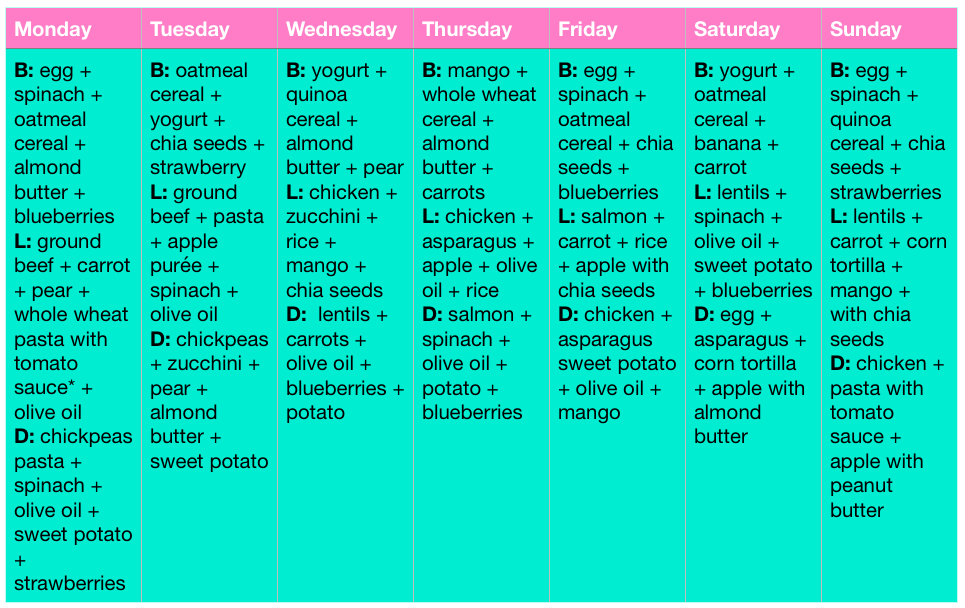 *always homemade tomato sauce (boiled tomatoes with garlic, onions, some herbs and cumin, all processed + sautéed with olive oil)
*always homemade tomato sauce (boiled tomatoes with garlic, onions, some herbs and cumin, all processed + sautéed with olive oil)
Things to keep in mind when you are able to feed baby different types of foods from each food group:
- Our doctor suggested that we should try to avoid giving baby animal protein 3 times a day, and instead incorporate protein from veggies such as lentils, garbanzos, etc. in some of the meals. We tried that and switching chicken or beef for a fish such a salmon (Isa’s favorite!) or tilapia.
- It’s important to include each food group in each meal. They were some days that I didn’t include all 5 groups for breakfast because Isabel would get full very fast, and I honestly didn’t feel she could enjoy them that early in the morning but I recognized my bad and I started doing it later on.
- We followed as much as we could our gastro-pediatrician’s suggestion of feeding baby each food item individually, instead of mixing them. This way the baby gets a better sense of things’ taste and feel. Sometimes, when she was being a picky eater, we mixed certain things to “hide” the item she didn’t want to eat, but it was rare.
Food combinations
Once that Isa had tried pretty much everything (around 10.5 months old), we got the green light to start combining food groups in her meals. This came in very handy because it reduced lots of cooking time! Now, at 12 months, most of her meals include combinations. Some of my favorite go-to complete meals are her baby full-meal pancakes and baby-approved beet banana muffins (pictured below, recipes soon to be included!)
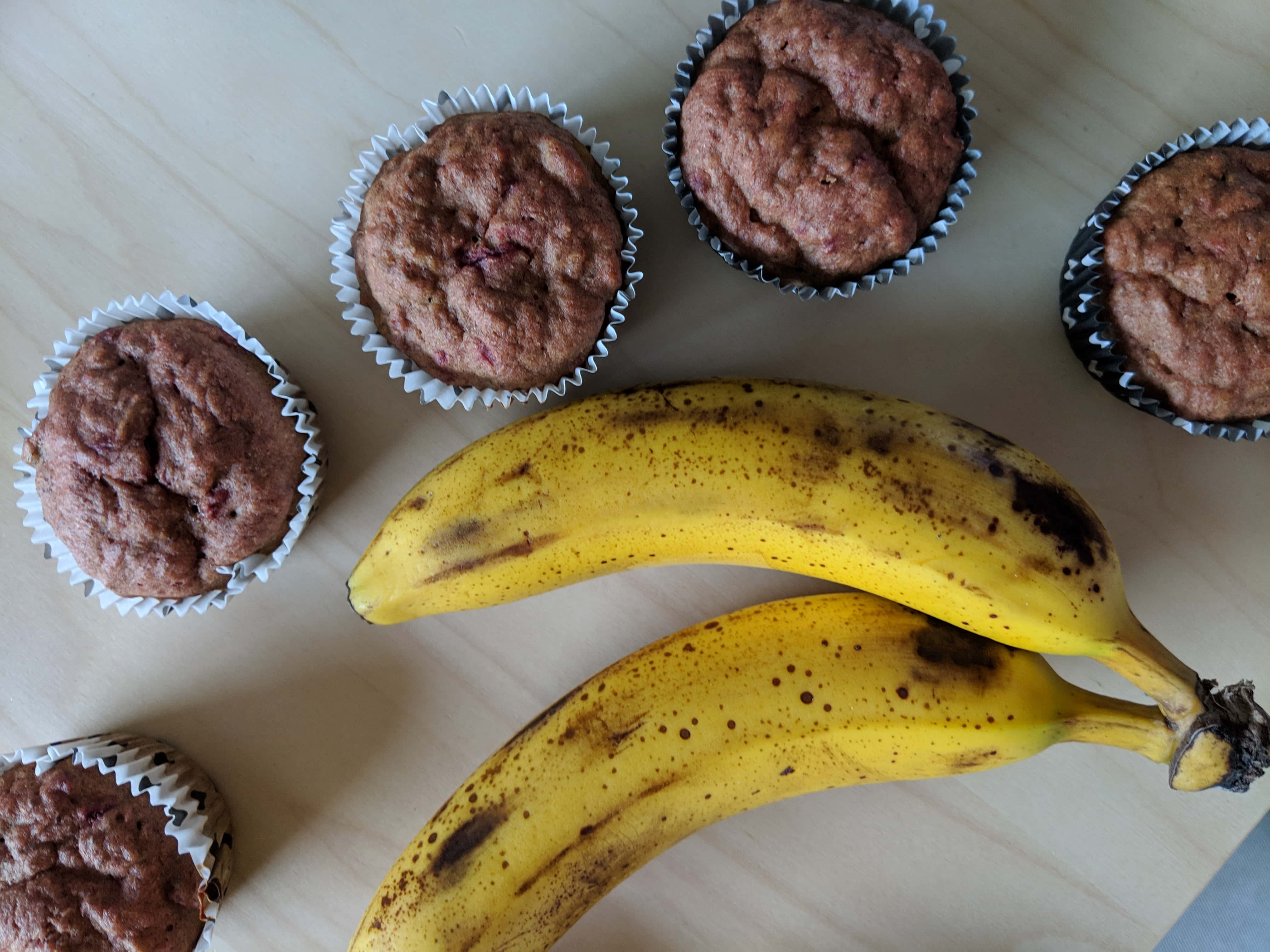 Snacking
Snacking
Around 9.5 months – 10 months of age, your baby probably will start drinking less milk and should be eating a snack or two, according to their needs. This is something that is offered mid-morning or mid-afternoon, in between basic meals. The snacks should always include 2-3 food groups, with one of them being either grains or healthy fats and the other being fruits or veggies. In terms of portion control, think of the snack as 1/4 or 1/3 of what they would usually eat on a regular meal. We started giving Isa a snack a bit earlier than the program suggested, at 7 months because that’s when she started daycare and it was part of the daycare schedule. She adjusted to this pretty well and it luckily it didn’t interfere with the full meals – I guess she’s just a hungry baby!
Spacing out meals
Meals should be spaced at least 2 hours apart, and to help with picky eating you should always try to space out milk intakes at least one hour before the solids feeding. Otherwise, your baby will most probably be too full to be interested in finishing his/her solids.
On a typical daycare day, around the second month of solid feeding, our baby’s schedule would look like this:
- 5:30am-6:00 am – breastmilk, back to sleep
- 8:00 am – breakfast
- *9:00 am – she left for daycare*
- 10:30 am – snack at daycare
- 11:15 am – 5 oz formula in bottle, then first nap of the day
- 1:30 pm – lunch at daycare
- 2:00 pm – back home from daycare
- 3:30-4:00 pm – breastmilk or 5 oz formula bottle for second nap
- 6:30 pm – 7:00pm – dinner
- 8:30 pm – breastmilk for bed
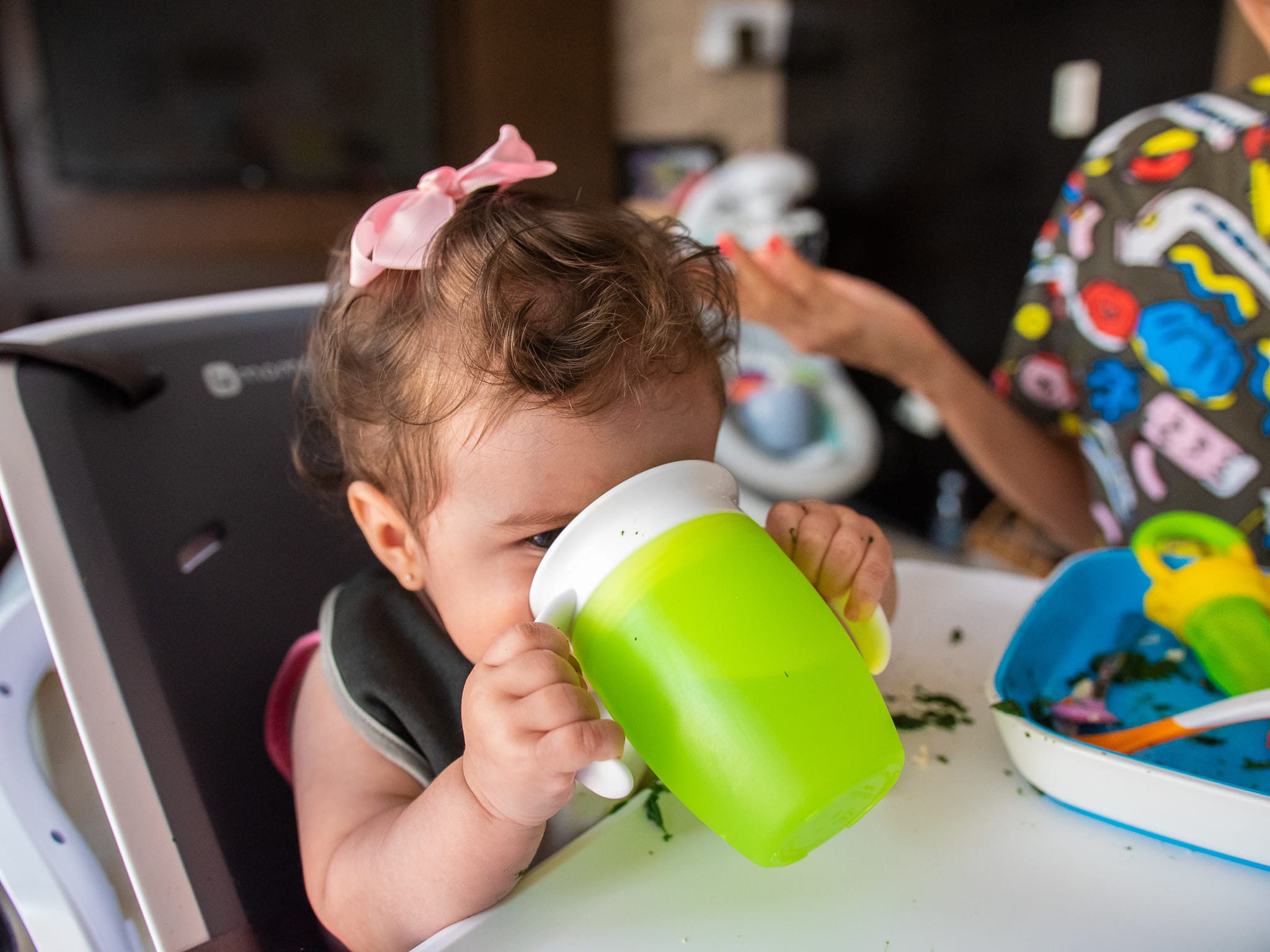 Other things to note and tips
Other things to note and tips
- Baby’s water intake also increased as she progressed in her feeding, and her milk (breastmilk or formula) intake started decreasing to favor solid foods.
- Milk intake: I used to give her breastmilk 5 times during the first two months we started with solids, then slowly started decreasing it to 4 intakes. I stopped breastfeeding at 10 months and we switched to an organic milk-based formula. Now, at 12 months-old she still drinks milk about 3 times a day, with the bigger intake happening at night (8-oz). We are also gradually introducing whole milk and all her bottles have a few ounces of it, mixed in with the formula.
- Try to cook things the day that baby will eat them, but if you have a busy schedule you may also meal prep in advance and freeze certain things. I would make a big batch of chicken or sweet potato or you name it, purée it, and store it as cubes in an iced cube tray with a lid. Each average cube fits around 2 oz, the usual amount of each type of food in a meal she would eat, so it was very convenient. I would pack her daycare lunchbox with these frozen cubes.
- Fruit can be frozen or stored in the fridge but it usually starts losing nutritional value after 24 hours, so it’s best to prep and offer it within a day.
- For more on the types of foods and textures and the basics of starting solids for baby see my first post on how we started with baby solids.
- You may also check out Dra. Mafer Gastropediatra: our pediatric nutritionist’s website to schedule an online consultation or her Instagram for more info and tips!
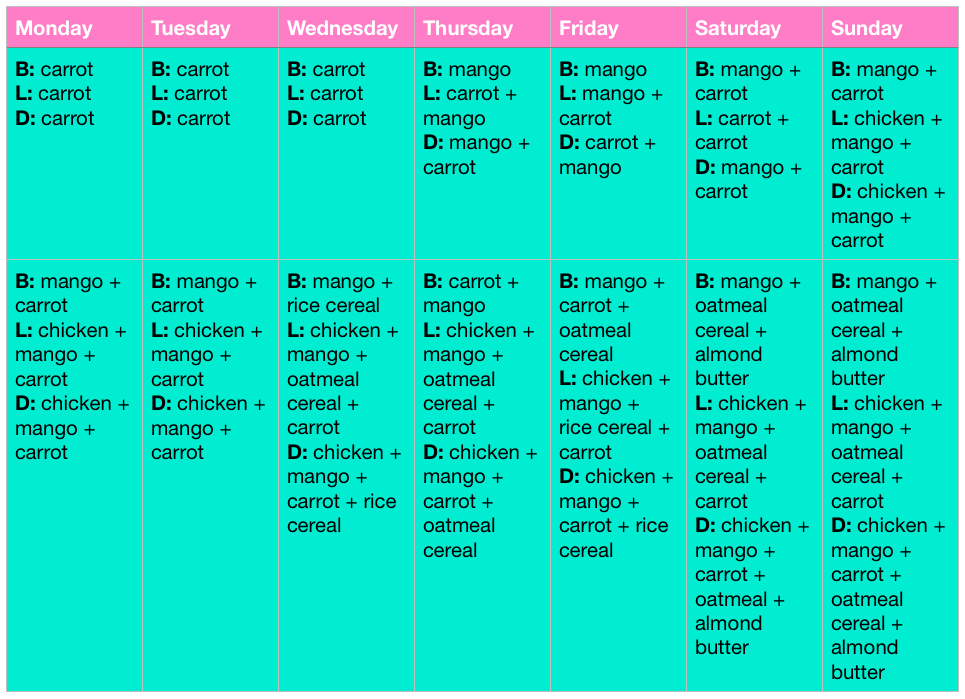
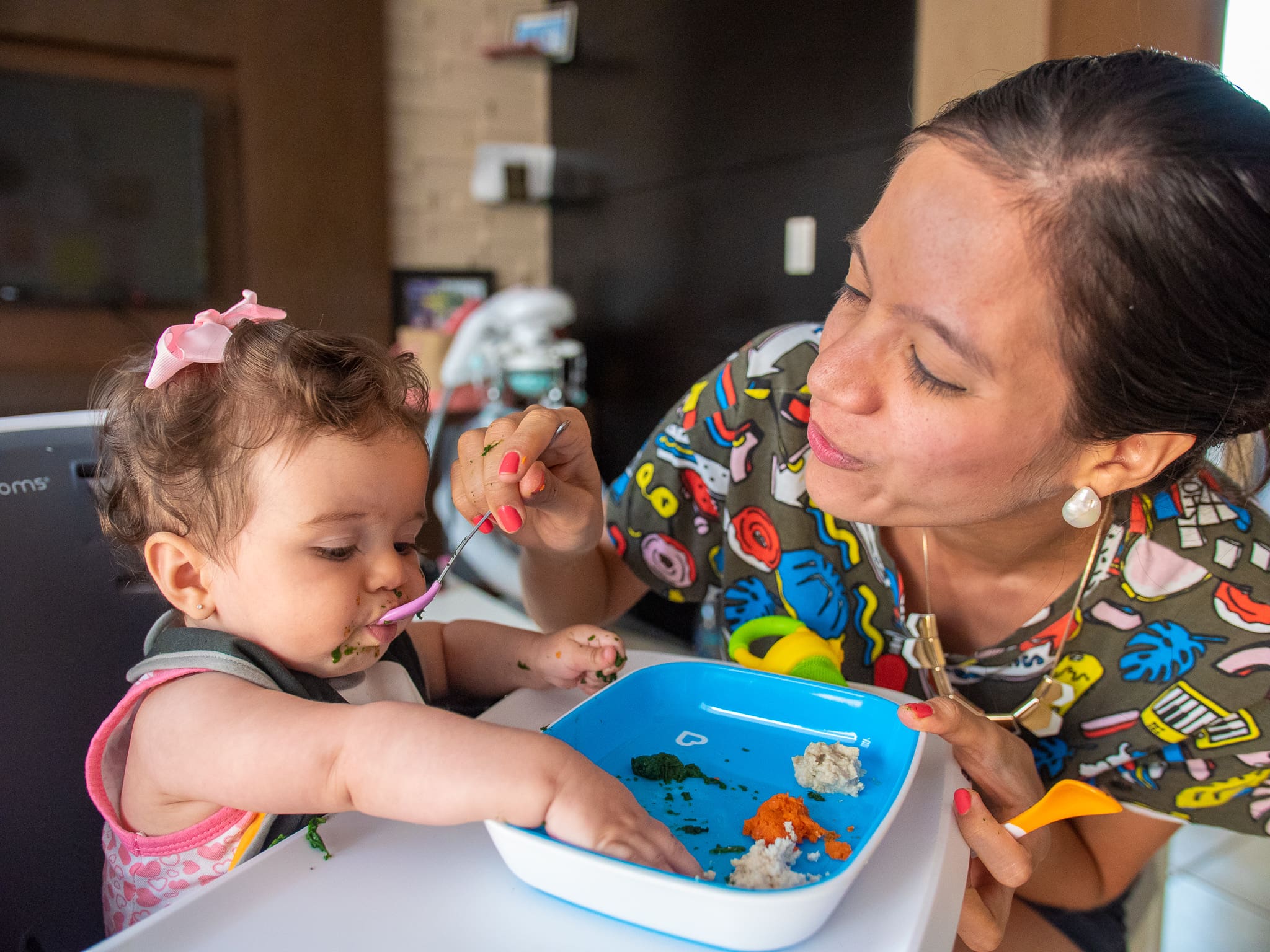
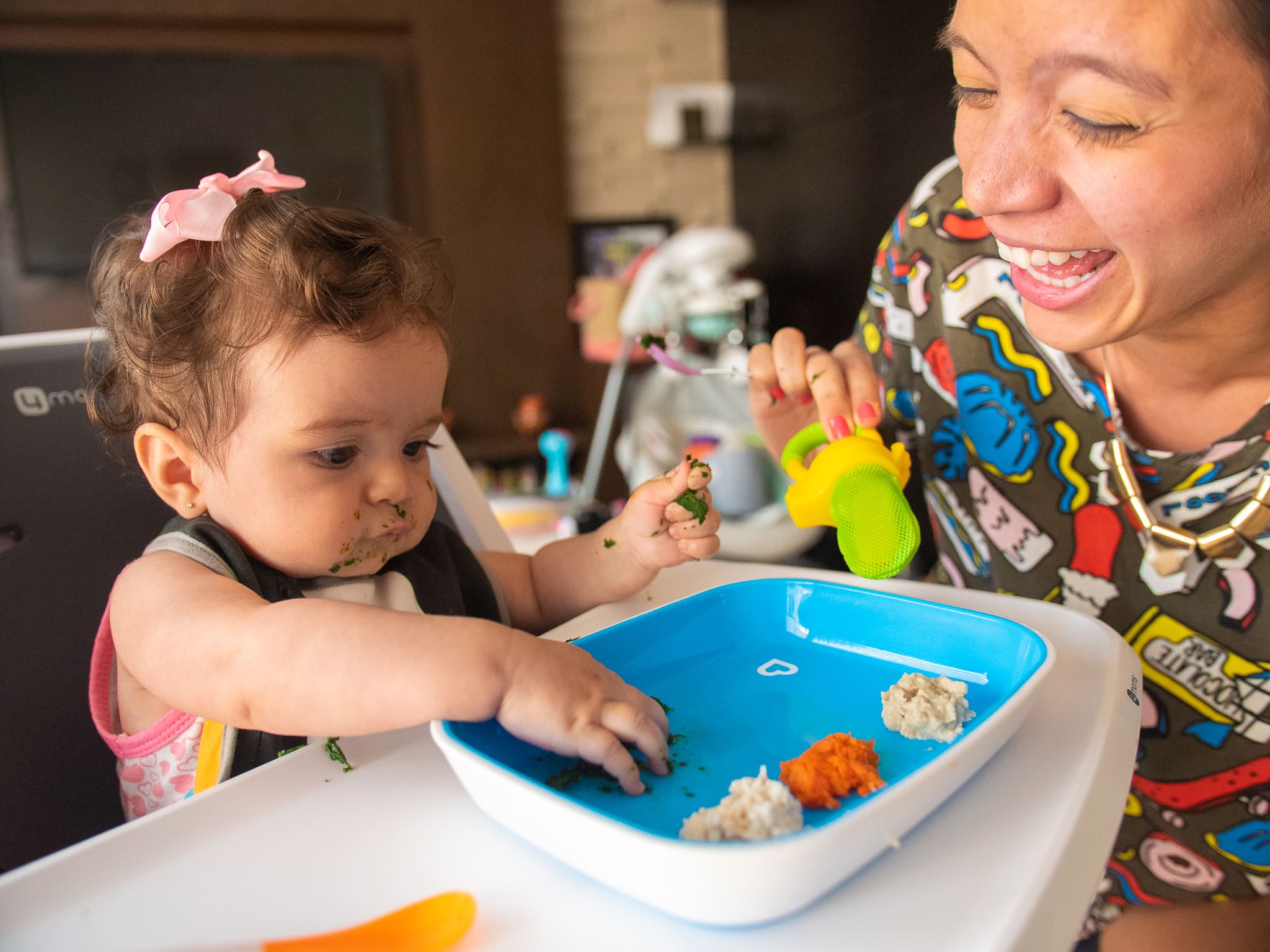

Leave a Reply